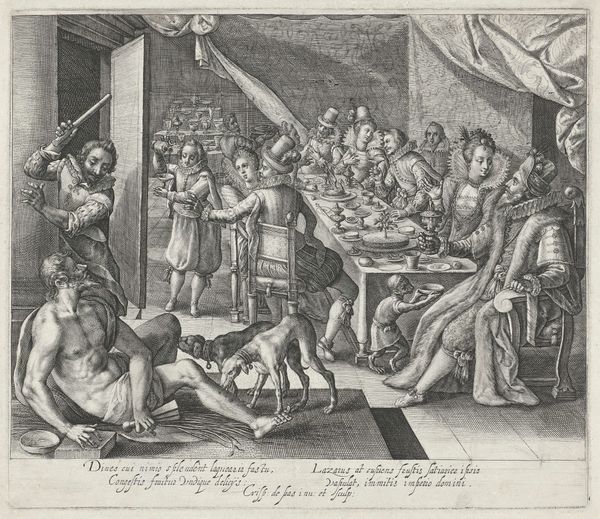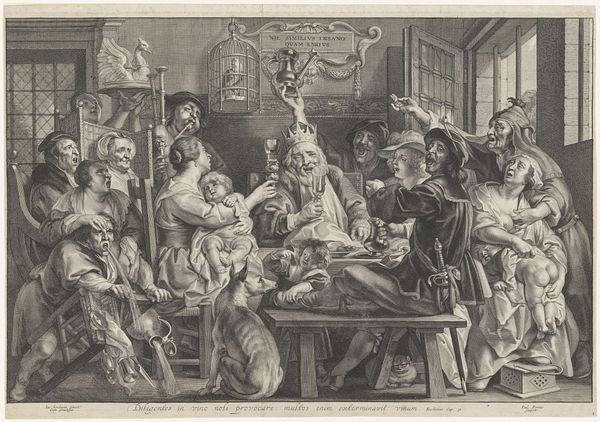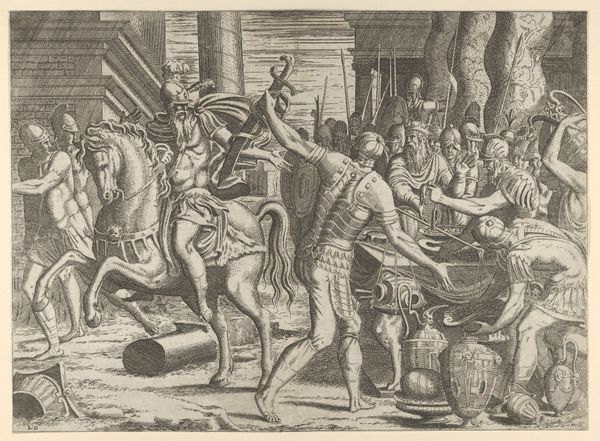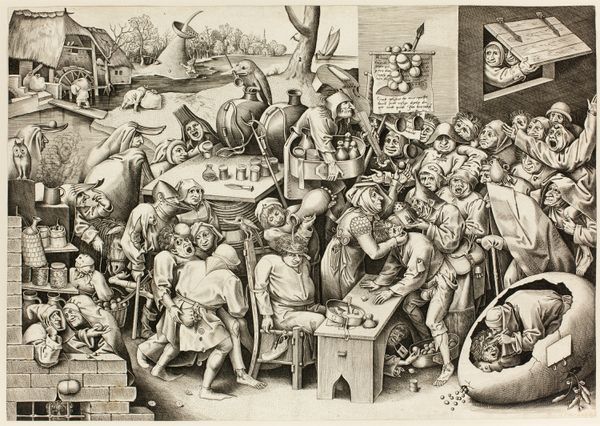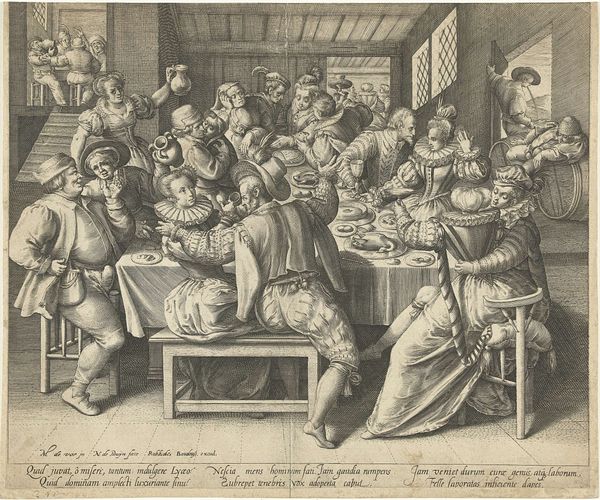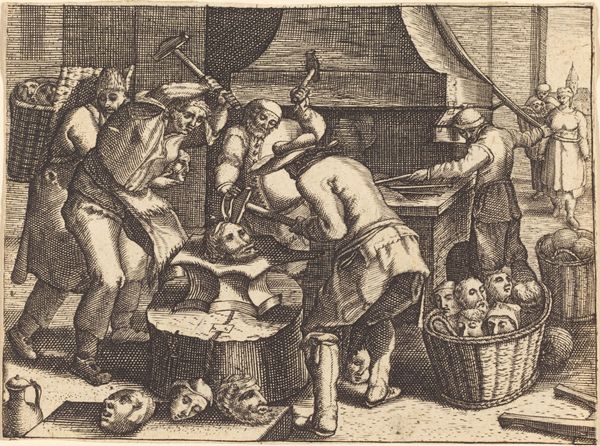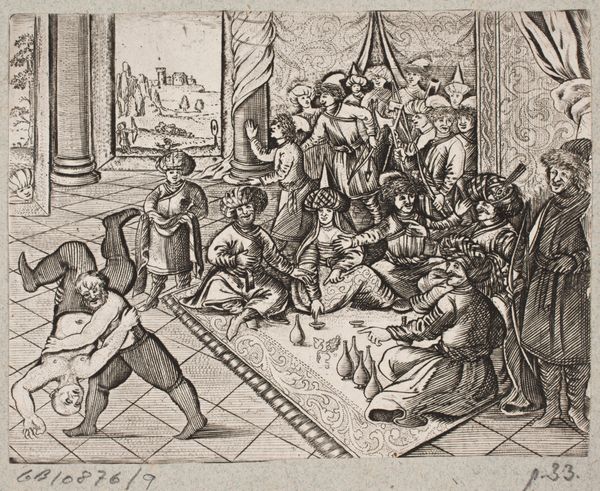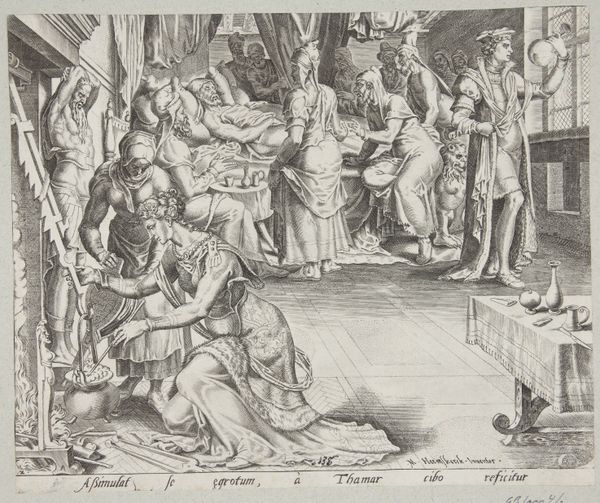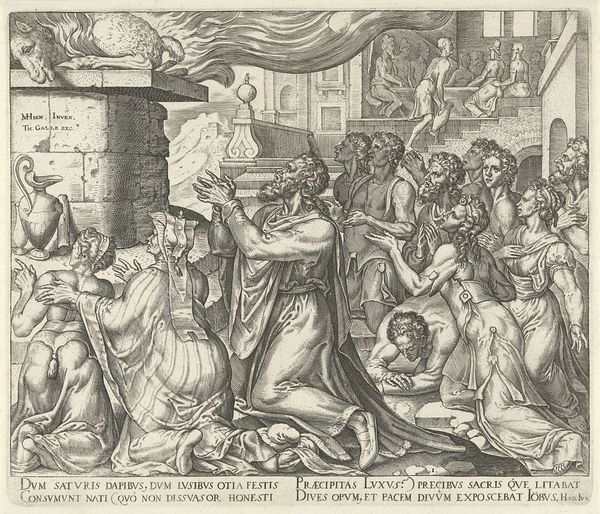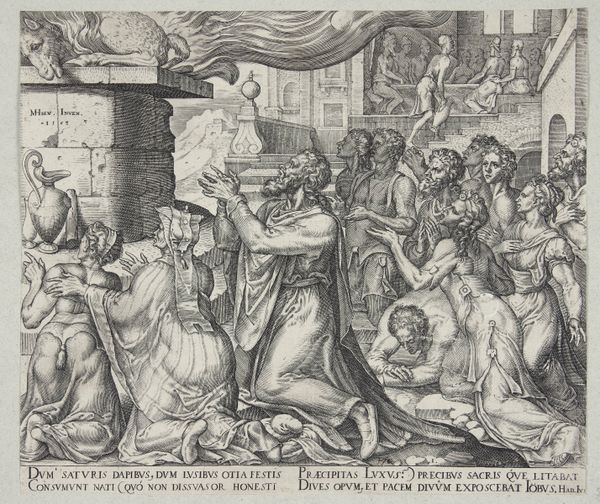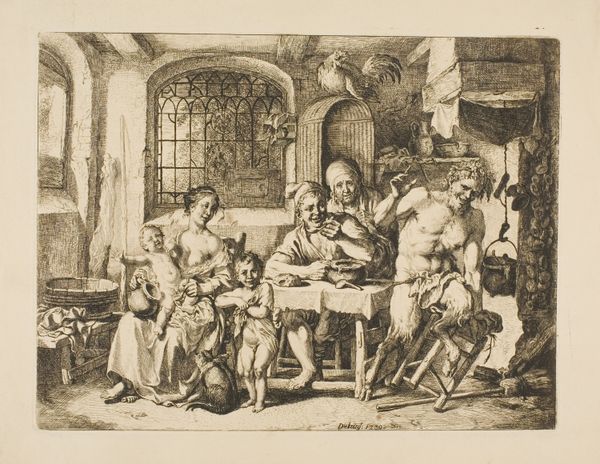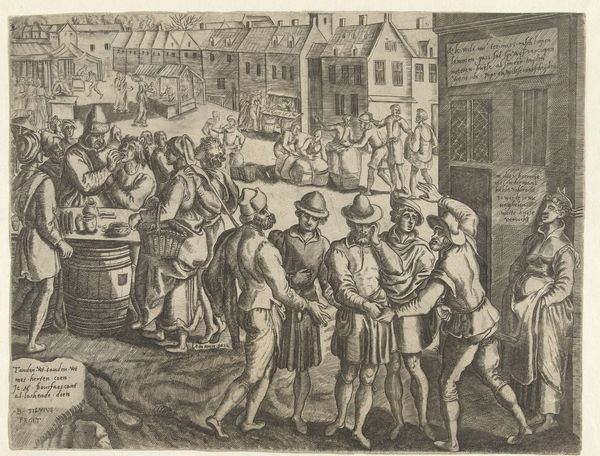
oil-paint
#
gouache
#
oil-paint
#
figuration
#
11_renaissance
#
oil painting
#
13_16th-century
#
genre-painting
Dimensions: 32.7 x 45.5 x min. 0.3 cm
Copyright: Public Domain
Curator: Here we have "Brothel Scene" by the Brunswick Monogrammist, likely rendered between 1540 and 1550 using oil paint. The artwork is currently housed at the Städel Museum. Editor: Immediately, I’m struck by the dense composition and muted palette. It's like observing a bustling microcosm, yet there's a certain stillness achieved through the artist's layering and subtle use of light. Curator: Genre paintings of this kind offer fascinating glimpses into the social dynamics of the 16th century, reflecting societal attitudes toward sexuality, class, and morality. This scene could represent more than a brothel; it may be a critical commentary on social decadence. Editor: Look at how the artist balances horizontal and vertical elements—the strong vertical lines of the doorway juxtaposed with the figures gathered around the table. This creates a sense of enclosure and intensifies the interiority of the scene. There’s an almost geometric order underlying the apparent chaos. Curator: Absolutely. Moreover, the symbols embedded within the image invite interpretation. The instruments suggest merriment but perhaps also a loss of control, and the gestures among the figures underscore power dynamics and the transactional nature of relationships within this setting. How do these figures reflect broader roles within society? Editor: Semiotically, the clothing speaks volumes—the sumptuous fabrics contrasting with the worn attire hinting at the varied social strata represented. And the interplay of gazes locks us, the viewers, into the role of voyeurs, forcing us to question our position in relation to what's unfolding. Curator: Considering the Reformation era, the overt display of indulgences becomes increasingly meaningful. The painting raises critical questions about societal norms and their subversive defiance by these figures, making it less about lewdity and more about protest against an unjust system. Editor: Observing how light interacts with the forms—note the faces cast in shadow—introduces an element of chiaroscuro, adding dramatic tension and lending psychological depth to these figures. Despite its small scale, it holds an enormous sense of enclosed drama. Curator: Understanding how it functions as a historical text allows us to extract commentary on labor and leisure, exploring agency for women and scrutinizing the behaviors of men within specific socioeconomic structures. Editor: Examining its architecture through these arguments adds compelling richness to this seemingly straightforward genre scene. It provokes deeper reflection beyond what might first meet the eye.
Comments
Join the conversation
Join millions of artists and users on Artera today and experience the ultimate creative platform.
